A Warming ClimateThe average weather over a particular region of the Earth. Climate originates in recurring weather phenomenon that result from specific types of atmospheric circulation. Motivates the Research
I've really had a great adventure in Svalbard, and learned quite a bit about glaciers and glacier sediment. But it's time to pull it all together and ask the question – so what? Why is this research important?
It boils down to climate. Our climate is warming, and the more we learn about what is happening, the more we can accurately predict and plan for the future. Studying glaciers and their sediments is one piece of the climate picture.
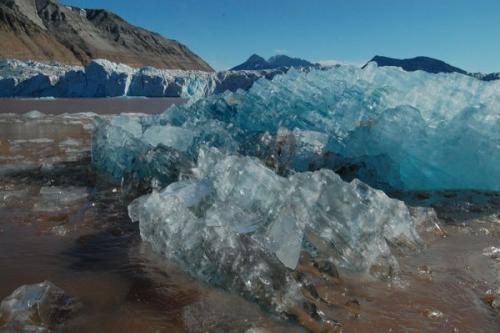
What is happening to our climate?
I won't spend too much time on the science of climate change, as there are many great sources that give a great overview of the science. But to summarize:
The Greenhouse Effect
The sun's energy radiates to the earth and much of this energy gets absorbed by the earth's surface. Some of this energy gets transferred from the earth's surface back to the atmosphere (in the form of heat energy). Our atmosphere will trap some of this heat, and that's a good thing – this is what keeps our atmosphere at a temperature that allows life to be sustainable. This is called the greenhouse effect (because this is similar to how a greenhouse works). The gases in the atmosphere that trap heat are known as greenhouse gases, and the main greenhouse gas is Carbon Dioxide (CO2).
But if too much heat is trapped, then the atmosphere will warm up.
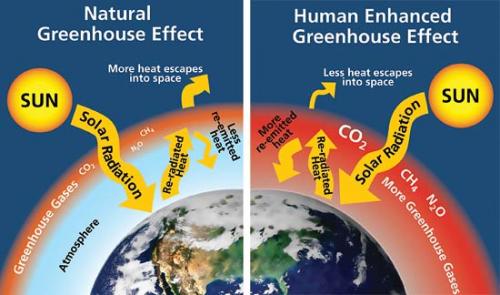
For the past several decades scientists have been measuring the temperature and the amount of Carbon Dioxide in the atmosphere. What has become clear is that there is a direct connection between these two – since the 1800's, at the start of the Industrial Revolution, humans began burning a lot of fuel which contributed to a dramatic rise in the amount of CO2 in the atmosphere. This increase in CO2 continues to this day.
Over the same period there has been a rise in atmospheric temperature.
While the climate has certainly fluctuated in the past due to natural phenomena, no natural explanation can fit the data right now, and scientists now agree overwhelmingly that the current global warming is due to human-produced CO2.


How CO2 affects global warming
Possible effects of global warming are well studied. They include, of course, an overall rise in the average temperature of the atmosphere. Higher temperature air can hold more moisture, so some parts of the world will see greater rainfall and more storm activity. At the same time, this will cause a shift in climate patterns, so some areas will see a dryer climate develop. There are additional effects in the ocean. The ocean will also increase in temperature, and the increase in CO2 levels will cause the ocean to become more acidic. This will have significant effects on marine life.
Global Warming and Ice
We are already seeing year after year of record temperatures in both the air and the ocean.
As the temperature of the air and the ocean rises, more ice melts. In fact, the ice cover in the Arctic Ocean has been shrinking rapidly. The famed "Northwest Passage", which was a way that Arctic explorers tried (mostly unsuccessfully) to get through the Arctic, is now ice-free in summer. The water from that ice has to go somewhere, and where it goes is into the ocean. Thus, as more and more glacier ice melts, the sea level rises. Currently sea level is rising globally at an average rate of 3.4 millimeters per year. This may not seem like a lot, but it's important to remember that this rate is increasing. Most models predict at least a 1-meter rise in sea level by the end of the 21st century.
What are the implications of a 1-meter sea level rise? A huge number of human beings live right on the coast, and a rise in sea level could cause significantly more flooding and displacement of people.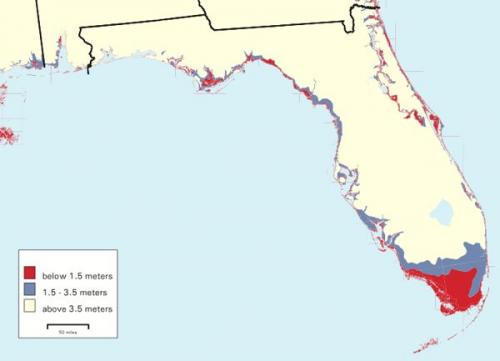
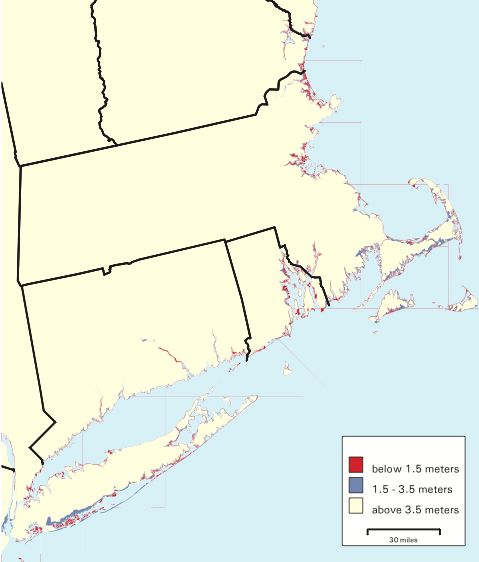
Positive Feedback Loop
As I discussed in a previous journal , the melting of glaciers due to global warming is what scientists call a positive feedback situation. The more glaciers melt, they make it easier for glaciers to melt faster. More meltwater under the glacier makes it easier for glaciers to increase their flow rate, which causes them to thin out, creating more crevasses (cracking). These crevasses themselves will more easily fill with water, which absorbs sunlight very effectively (compared to ice which reflects sunlight). This then causes the rate of melting to increase even more. Plus, as the temperature of the ocean increases, this makes it more likely that ocean water will melt the glaciers faster than it is.
As ice melts, it leaves behind water and rock. Water and rock absorb heat more effectively than ice. (Ice reflects over 80% of the sun's light – water absorbs over 80%!) This, in turn, accelerates the warming of the atmosphere... more positive feedback...
So the question "why should we care?" should be becoming clear – what we do in the mid-latitudes affects the Arctic, and that in turn has effects on us. Our habits – burning fossil fuels for transportation, electricity, etc. adds CO2 to the atmosphere. This, in turn, is causing ice to melt in the Arctic. Which is causing sea levels to rise. This will affect us.
There is an attitude among many people that "our climate is too big" for humans to possibly have an effect on it. Also there is the attitude that climate can't possibly change quickly. These are misconceptions born from a lack of understanding that the effect of human-caused pollution is enormous. The data from the past few decades is clear – we are having a huge effect, and the climate is changing quickly.
Firsthand Evidence
So far, what are we seeing here in Svalbard?
It is clear from comparison of photos taken in years past to what we are seeing now, that the Kronebreen glacier is receding. Three things we observed:
1) Comparing our observations of the glaciers we study with photos from 2005 and 2011 make it clear that these glaciers are getting smaller.
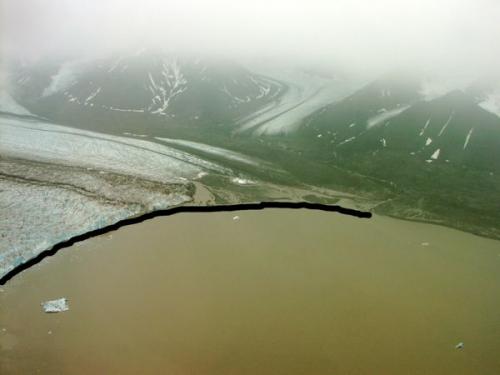
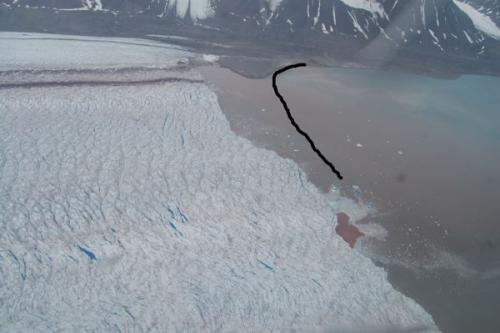
2) Observations we made of the ablation stake on Kongsvagen glacier make it clear that this particular glacier is getting thinner. We saw a stake that was put into the ice a year ago to monitor the thickness of the glacier. The stake was completely buried in ice last year – now a 14-15 foot portion of the stake sticks out of the glacier.
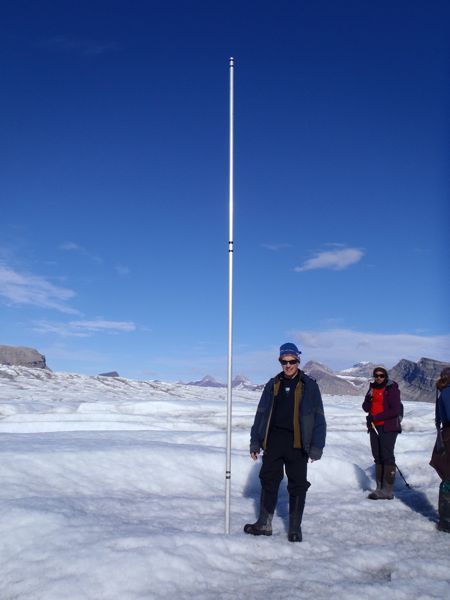
3) We compared observations we made of a delta forming at the edge of the Kongsvagen glacier with observations from 2 years ago – a great deal of sediment has been released from the glacier and the delta has shifted position. Where there was a delta six years ago is now a filled in area, and the delta has shifted backward, along with the ice.

These are only a few small observations, and the students will be processing their data over the next few months and we'll get a much clearer picture of exactly what is happening with this particular glacier system.
Modeling what happens to glaciers is indeed a very complicated business. And it is vital to everyone from urban planners to military experts to be able to know what to expect. So how do we make accurate predictions about the future? By collecting as much data as possible and using that data to create models of the future.
So we are in the process of contributing our little pieces of data...
The more I learn about geology, two things become clear. First, the climate of our planet is not constant, and that our time span on this planet is so short that we lose perspective on this. Those who are convinced that climate can't possibly be changing ignore the fact that climate on Earth has and will change. Secondly, that humans can have a much larger impact on the planet than we think we are capable of. We have, in a blip in geologic time, effectively warmed the planet more than it has in the past 100,000 or so years. The Earth 100,000 years ago had quite a bit less ice and much higher ocean levels than it does today. The lesson there is that we can and are having a large impact on our environment.
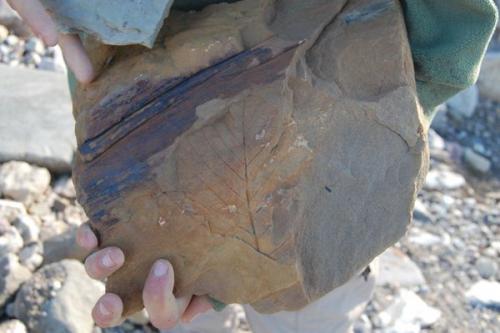
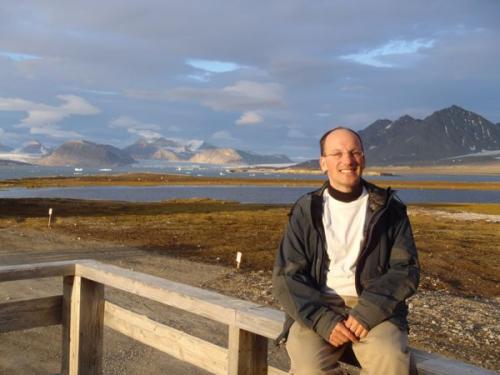



Comments